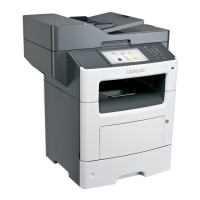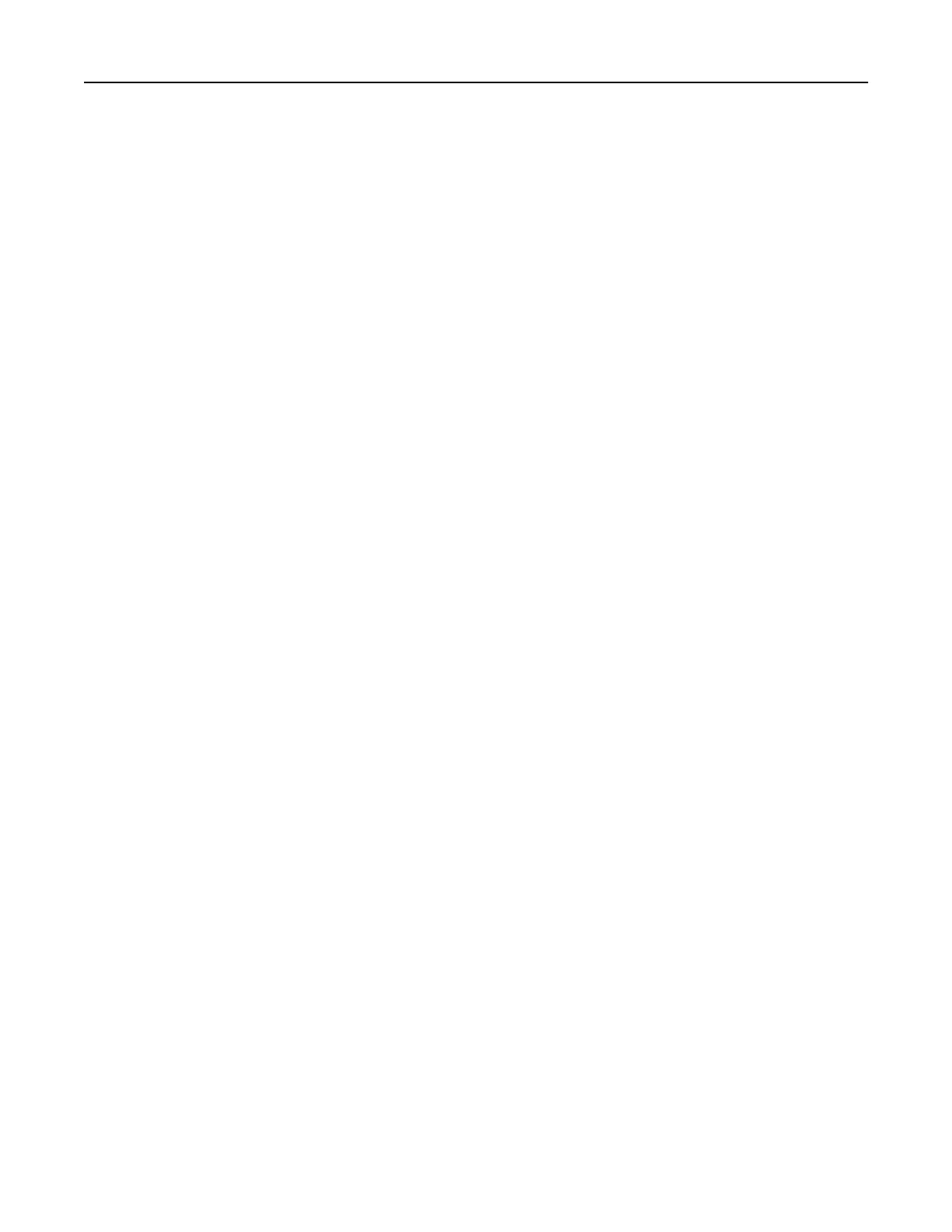Driver edge For printers that use a fixed reference for feeding paper through the paper path
(as opposed to printers that center paper in the path), the edge of the print
material that is positioned next to the hardware reference and that is driven by
the rollers in the printer. For most Lexmark printers, the driver edge is the left
edge of a portrait page.
Embossing Process of raising the surface of the base material by stamping an image or design
with an embossing machine. The machine has a roll with a raised image on the
surface. As the print material passes through the machine, the image is pressed
into the material. See “Debossing” on page 174.
Feed How well the stock moves out of the paper tray and through the printer.
Fiber content The material used to manufacture the paper. Most high‑quality xerographic
paper is made from 100% chemically pulped wood. This content provides the
paper with a high degree of stability resulting in fewer paper feeding problems
and better print quality. Paper containing fibers such as cotton have
characteristics that can result in degraded paper feeding.
Fuse grade Qualitative measurement of the adhesion of toner to the printed sheet.
Fusing Printer process of melting toner and adhering it to the print material.
Glue contamination See “Adhesive contamination” on page 174.
Grain The orientation of the fibers in the print material. Grain short indicates the fibers
run the width of the paper. Grain long indicates the fibers run the length of the
paper.
Ink contamination Transfer of ink from a form to the printer's pick mechanism or fuser assembly,
which can cause printer contamination.
Ironing A mechanical process used during conversion to flatten stock.
Laser ink Inks that can withstand fuser temperatures of 225°C (437°F) and pressures to 25
psi without contaminating the printer or releasing hazardous fumes.
Laser‑perfs Small perforations (20 to 30 perfs per inch) that create little paper dust and debris
and do not normally cause nesting. Also known as micro‑perfs or data‑perfs.
Leading edge The edge of the print material that enters the printer paper path first.
Matrix Unneeded portions of die‑cut stock around labels. A stripped matrix is one that
is removed to make it easier to peel labels from the liner.
Micro‑perfs See “Laser‑perfs” on page 175.
Moisture content The amount of moisture in the paper, which affects both print quality and paper
feeding. Leave paper in its original wrapper until you are ready to use it. This
limits the exposure of the paper to moisture changes that can damage the paper.
Nesting To fit compactly together; to interlock; to stick together.
Offset powder A powder applied during some printing processes to help dry inks.
Oil bleed Migration of materials from the substrate or the adhesive out to the face. This
generally occurs in aged materials or materials exposed to extreme temperature
changes. Also known as penetration, bleed through, and bleed.
Ooze Migration of adhesive away from labels, which can cause printer contamination.
Perforation Line of very small holes or slots punched to facilitate tearing. See also
“Laser‑perfs” on page 175.
Glossary 175

